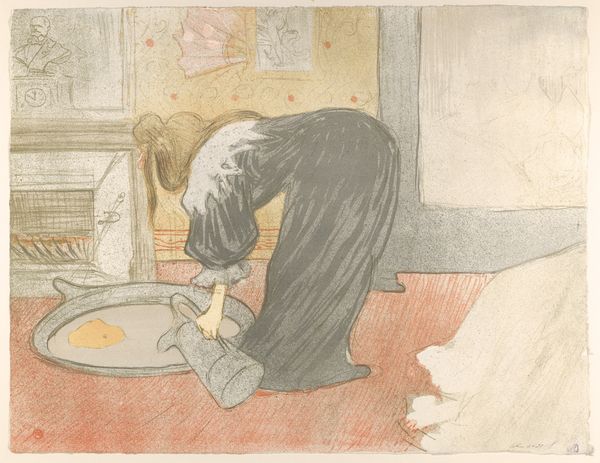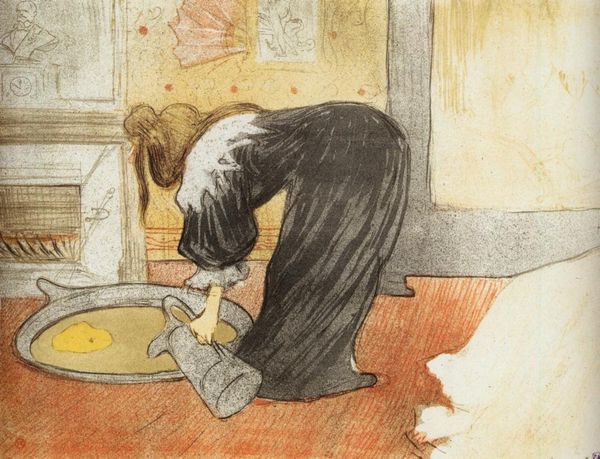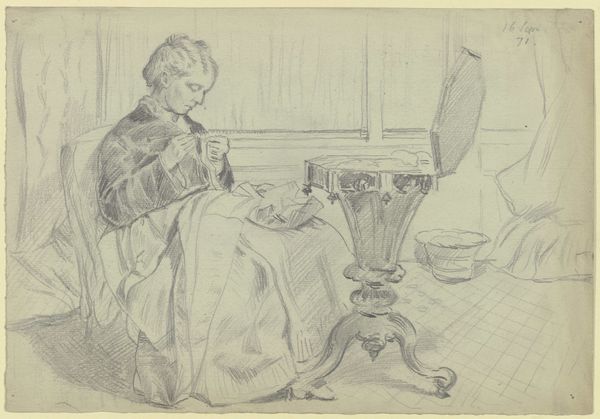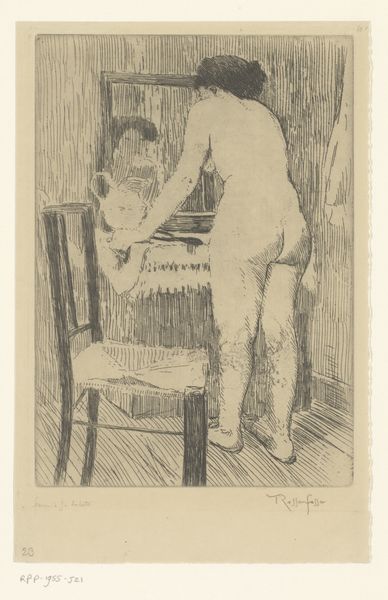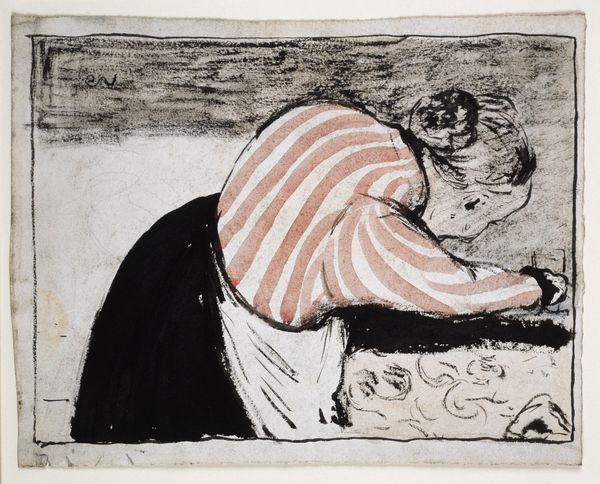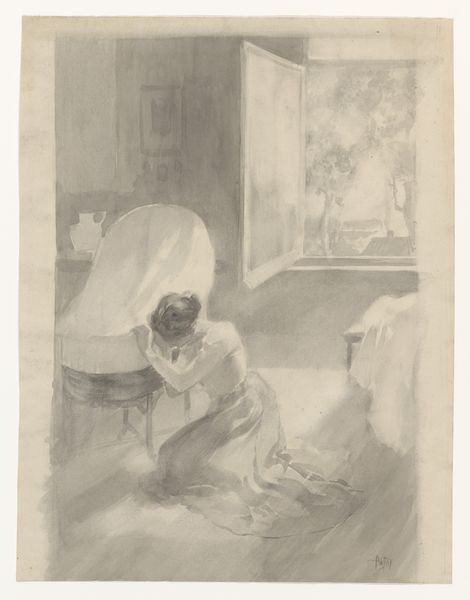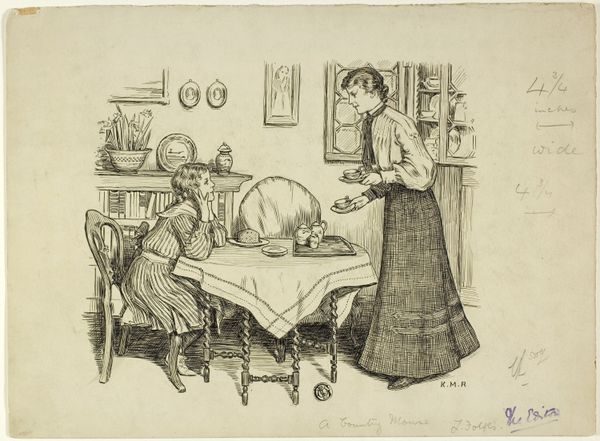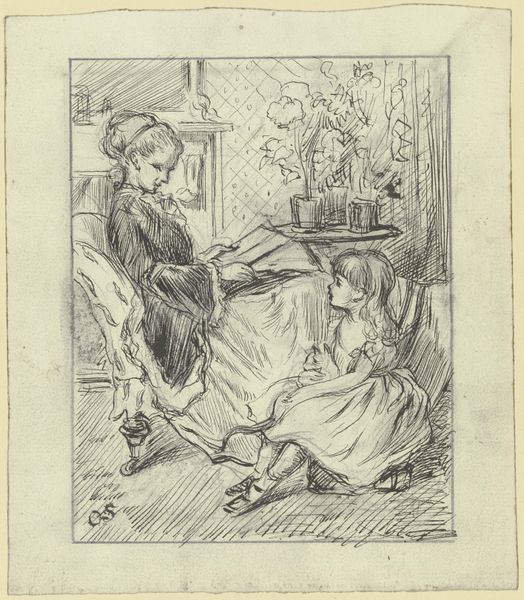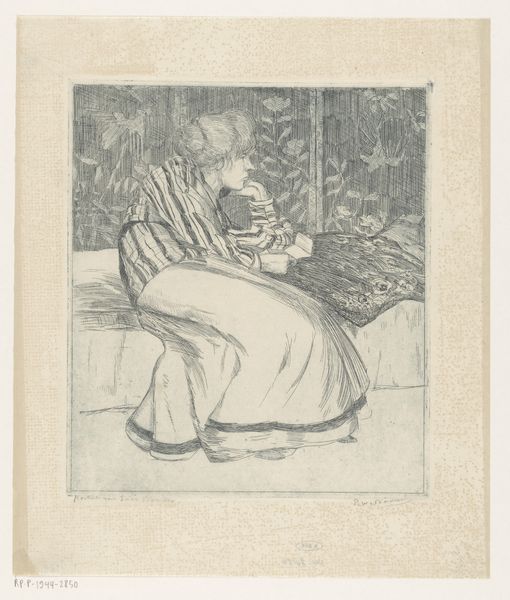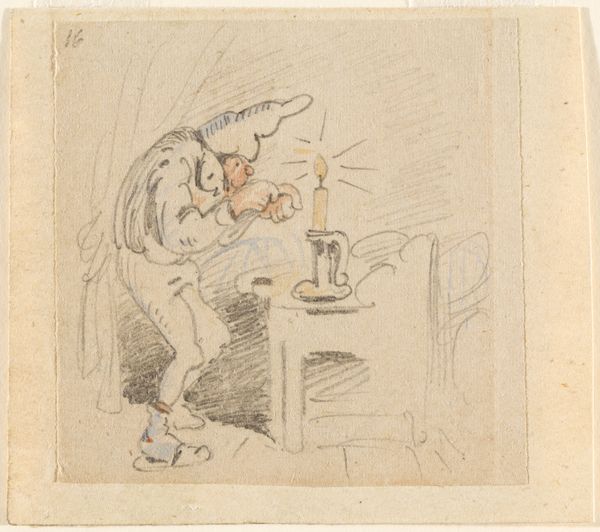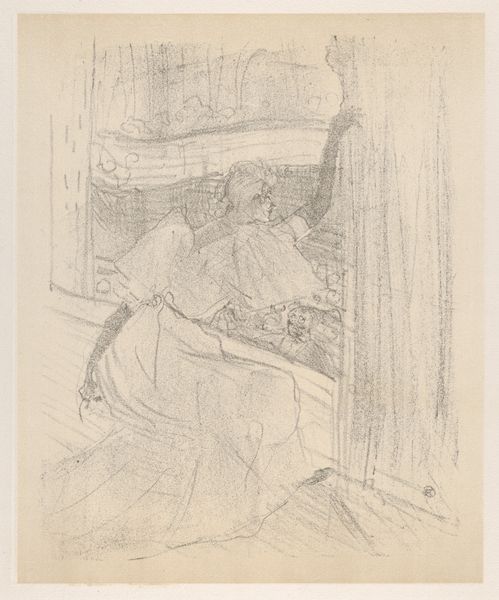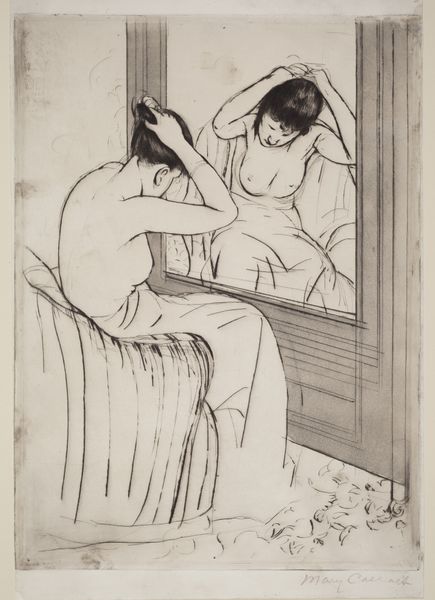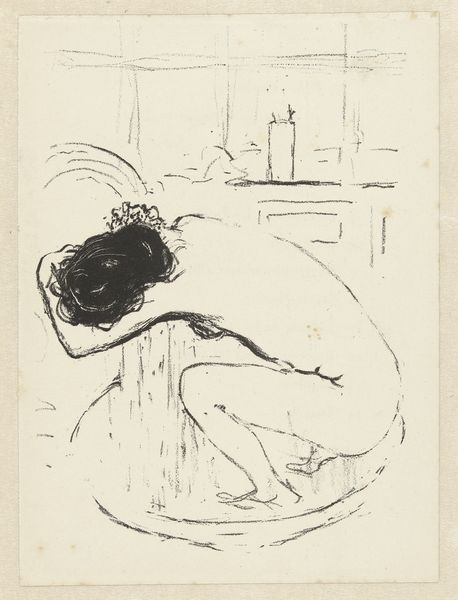
Dimensions: 15 3/4 x 20 1/2 in. (40.01 x 52.07 cm) (image)23 5/8 × 29 5/8 in. (60.01 × 75.25 cm) (outer frame)
Copyright: Public Domain
Henri de Toulouse-Lautrec made this lithograph, "Woman at Her Toilette" or "Femme au tub", without a date, depicting a woman in an intimate, private moment. The late 19th century in France saw increasing interest in the lives of ordinary people, however, the depiction of women was subject to strict social codes. The artist captures a sense of everyday life but also challenges conventional portrayals of women as idealized figures. Lautrec was known for his depictions of Parisian nightlife and the demimonde. Here, we see a quieter scene, but one that resonates with the same spirit of observation and realism. The influence of Japanese prints, popular at the time, is evident in the flattened perspective and the use of strong lines. The artwork also provides insights into the changing social structures of its time. Art historians can investigate the cultural context through resources like letters, journals, and newspapers.
Comments
minneapolisinstituteofart almost 2 years ago
⋮
Another place of entertainment in Paris at the end of the nineteenth century was the brothel or bordello. They were regarded as a natural way of life for Parisian husbands and an accepted privilege for bachelors. Toulouse-Lautrec frequented the brothels of Paris; it is even rumored that he lived in the brothel for a time. In the Elles series of ten prints and a cover, Toulouse-Lautrec presents his prostitutes in poses that emphasize the aspects of their lives that they had in common with women outside their profession. He shows them bathing, dressing, combing their hair, and even lying exhausted across the bed. In contrast to many of the titillating images of prostitutes seen at the time in books, periodicals, and performances, Toulouse-Lautrec presents a different version of the profession in this series.
Join the conversation
Join millions of artists and users on Artera today and experience the ultimate creative platform.
